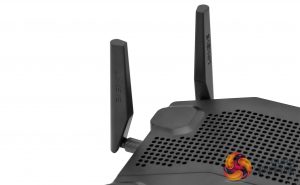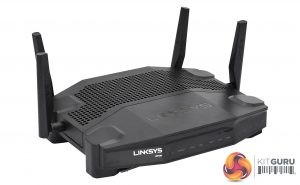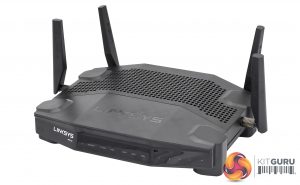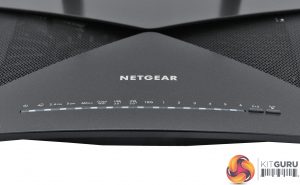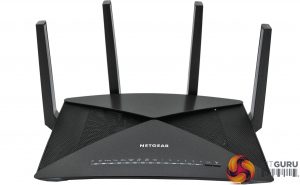Although you can purchase the Killer Wireless-AC 1550 as a standalone device and install it in your own laptop, the more realistic scenario is to purchase a notebook that has Killer Wireless-AC 1550 built in from the outset. We were sent one such beast in the shape of the PC Specialist Octane V. This monster 17.3in gaming notebook incorporates a 3.7GHz Intel Core i7 8700K six-core CPU, 16GB of 2,666MHz DDR4 SDRAM, and NVIDIA GeForce GTX 1060 graphics, although you can specify up to 64GB of RAM and up to GTX 1080 graphics.
A 4K screen is also available, but our system came with the Full HD alternative that supports up to 144Hz refresh and has G-Sync adaptive synchronisation to go with the NVIDIA graphics. There's a 512GB Intel 760p M.2 NVMe SSD as well as a 1TB Seagate Barracuda Pro 7,200rpm 2.5in hard disk for all your storage needs.
The Killer Wireless-AC 1550 is not the default option with the Octane V, but it only costs £12.50 plus VAT to specify this instead of the vanilla Intel 9260 WiFi chipset without the special Killer sauce.
The above specification will set you back a fairly reasonable £1,789 inc VAT.
As we have emphasised in this review already, you need a router than can take advantage of what the Killer Wireless-AC 1550 has to offer before you feel the benefit. This includes at least 2×2 antennas (which pretty much all routers will have), and support for 160MHz channels of 5GHz 802.11ac WiFi.
The Linksys WRT 32x that Rivet Networks sent us to help with testing has these features. This is an AC3200 router, and specifically includes the Killer Prioritisation Engine built in. It has a 4×4 antenna configuration and MU-MIMO support.
We also wanted to see what kind of performance you could get from a router that offers 160MHz 802.11ac but without the Killer Prioritisation Engine, so we scoured our shelves and found that the NETGEAR Nighthawk X10 R9000 we tested a while ago offers these features. This also offers 4×4 antenna configuration, and 60GHz 802.11ad WiFi that we won't be calling upon at all in this context. We did all our performance testing with this router, because the Linksys router encountered performance issues during the testing process.
We have also called upon some past router results to use as comparison, but will mention those in the next section.
 KitGuru KitGuru.net – Tech News | Hardware News | Hardware Reviews | IOS | Mobile | Gaming | Graphics Cards
KitGuru KitGuru.net – Tech News | Hardware News | Hardware Reviews | IOS | Mobile | Gaming | Graphics Cards






